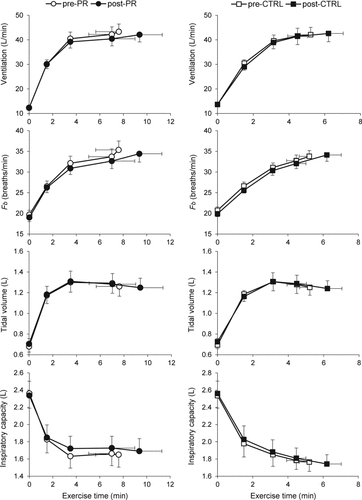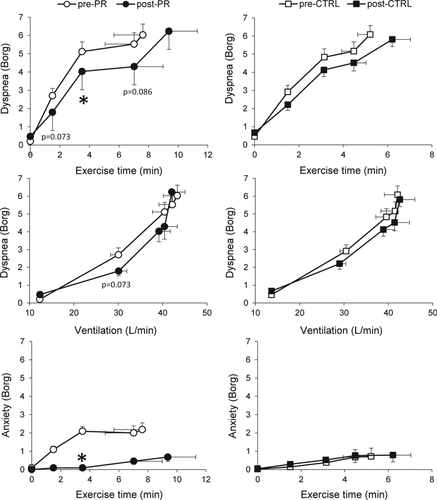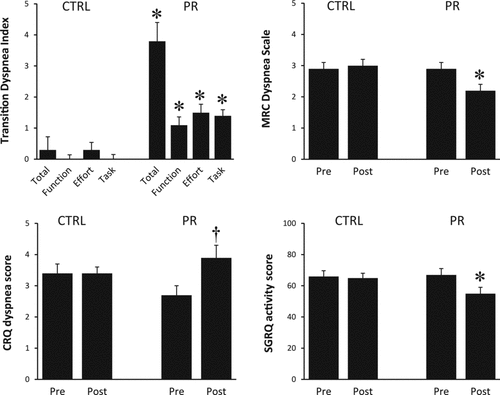Figures & data
Table 1. Domains of dyspnea measurement
Table 2. Subject characteristics at study entry
Figure 1. Ventilatory responses to CWR cycle exercise in response to pulmonary rehabilitation (PR) or usual care control (CTRL). Data plotted are means ± SEM for measurements collected at steady-state rest, isotime and peak exercise. Fb, breathing frequency.

Table 3. Anthropometric and pulmonary function measurements of subjects who completed the study
Table 4. Questionnaires and functional tasks
Figure 2. Intensity of exertional dyspnea and dyspnea-related anxiety during CWR cycle exercise. Data plotted are means±SEM for measurements collected at steady-state rest, isotime and peak exercise. *p < 0.05 pre- versus post-intervention.

Figure 3. Measurements of activity-related dyspnea (symptom impact) in response to pulmonary rehabilitation (PR) or usual care control (CTRL). Scores are shown for the Transition Dyspnea Index (TDI) and its components (Functional Impairment, Magnitude of Task, Magnitude of Effort), the Medical Research Council MRC) dyspnea scale, the Chronic Respiratory Questionnaire (CRQ) dyspnea component, and the St. George's Respiratory Questionnaire (SGRQ) activity component. Values are means ± SEM. *p < 0.05 within- and between-group difference; †p < 0.05 within-group difference for change with intervention.
